The Thunder didn't exactly coast through the 2025 playoffs, having had to pull out a pair of Game 7 victories (over Denver and Indiana) in order to win their first NBA championship since the franchise moved from Seattle to Oklahoma City.
Still, the history books will show that this year's Thunder were one of the NBA's most dominant teams ever. Only four clubs have compiled more wins in a single regular season than the 68 victories Oklahoma City racked up in 2024/25, and the Thunder's +12.7 regular season net rating ranked second all-time, behind only the 1995/96 Bulls.
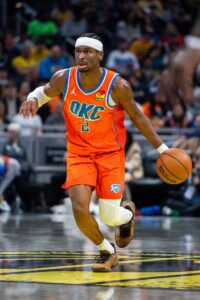 OKC's remarkable season is a testament to a rebuild that was executed nearly perfectly. Of course, Sam Presti and the Thunder got a nice head-start on that rebuilding process in 2019 when they were able to acquire future MVP Shai Gilgeous-Alexander, five first-round picks (four unprotected), and two pick swaps from a Clippers team willing to overpay for Paul George in order to secure Kawhi Leonard's free agency commitment.
OKC's remarkable season is a testament to a rebuild that was executed nearly perfectly. Of course, Sam Presti and the Thunder got a nice head-start on that rebuilding process in 2019 when they were able to acquire future MVP Shai Gilgeous-Alexander, five first-round picks (four unprotected), and two pick swaps from a Clippers team willing to overpay for Paul George in order to secure Kawhi Leonard's free agency commitment.
Even though that move was the catalyst for this year's championship run, many of the decisions Presti has made in the years since then have paid major dividends as well. That was especially true on draft day in 2022, when the team used its own first-round pick and one from the Clippers in order to select Chet Holmgren and Jalen Williams, who have since become franchise pillars and were the team's second- and third-leading scorers behind Gilgeous-Alexander this year.
After bottoming out with a 22-60 record in 2020/21 and a 24-58 mark in '21/22, the Thunder hit the fast-forward button on their rebuild when they added Holmgren and Williams to their roster, increasing their win total by double-digits in each of the next three seasons. They went from 24 victories to 40 to 57 to 68, earning the No. 1 seed in the Western Conference in both 2024 and 2025.
We've heard repeatedly over the last year or two that the NBA has entered its parity era. The league has had seven different champions over the last seven seasons, with no team repeating as champs since the Warriors in 2017 and 2018.
A 2016 salary-cap spike allowed Golden State to sign Kevin Durant away from Oklahoma City, adding him to a team coming off a 73-win season. But a move like that would be virtually impossible to pull off under the current system, which has eliminated the possibility of a huge single-year cap jump (annual increases are capped at 10%) and has implemented more punitive roster-building and financial penalties for teams with top-heavy rosters.
Given those new restrictions, it has become more difficult than ever for an NBA front office to build and maintain a dynasty, but if any recent champion has the makings of a dynasty, it's these Thunder. Oklahoma City is the second-youngest team in league history to win a title, shouldn't face any serious salary-cap or financial obstacles anytime soon, and is armed with enough future draft picks to continue adding affordable talent to its roster for years to come.
It's a good time to be a Thunder fan.
The Thunder's Offseason Plan
No NBA team enters the 2025 offseason with fewer short-term question marks than the Thunder, who have 13 players from their championship roster on guaranteed contracts for next season and hold team-friendly options on the other two. If they want to, they could bring back literally the exact same roster in 2025/26 while remaining well below the luxury tax line.

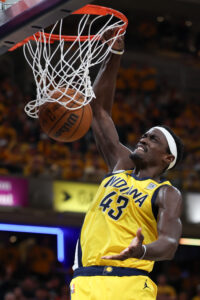 In other words, when they decided to run it back with a pretty similar roster in 2024/25, few fans or experts were projecting the Pacers to make another appearance in the conference finals, especially in the wake of a 10-15 start that had them outside of the top 10 in the East in mid-December.
In other words, when they decided to run it back with a pretty similar roster in 2024/25, few fans or experts were projecting the Pacers to make another appearance in the conference finals, especially in the wake of a 10-15 start that had them outside of the top 10 in the East in mid-December. A year later, much has changed in Minnesota. Longtime Timberwolves star
A year later, much has changed in Minnesota. Longtime Timberwolves star  Rather than running it back and seeing if a healthier version of that roster could make a deeper playoff run, the front office took an aggressive approach to the 2024 offseason, parting with five first-round picks in a trade for
Rather than running it back and seeing if a healthier version of that roster could make a deeper playoff run, the front office took an aggressive approach to the 2024 offseason, parting with five first-round picks in a trade for  Although Golden State's front office ultimately pivoted away from its star search and added a handful of quality role players -
Although Golden State's front office ultimately pivoted away from its star search and added a handful of quality role players - 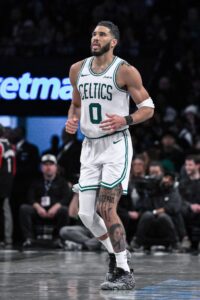 And it sure seemed like we were headed for a Celtics/Cavs showdown in the conference finals after no other team in the East finished within 10 games either of them in the regular season. Both clubs breezed through the first round and had plenty of momentum entering round two.
And it sure seemed like we were headed for a Celtics/Cavs showdown in the conference finals after no other team in the East finished within 10 games either of them in the regular season. Both clubs breezed through the first round and had plenty of momentum entering round two.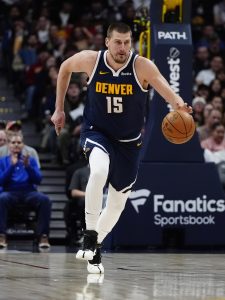 The Nuggets' only other trade during the 2024 offseason saw them give up three second-round picks to get
The Nuggets' only other trade during the 2024 offseason saw them give up three second-round picks to get 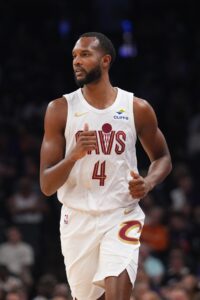 Garland was coming off an injury-plagued down year, while Allen had been unable to suit up for the Cavs' final eight playoff games due to a rib issue. There was a sense among many league observers that Cleveland would be better off trading one or both players to better balance the roster, given the overlap in skill sets between Garland and Mitchell in the backcourt and Allen and Mobley up front.
Garland was coming off an injury-plagued down year, while Allen had been unable to suit up for the Cavs' final eight playoff games due to a rib issue. There was a sense among many league observers that Cleveland would be better off trading one or both players to better balance the roster, given the overlap in skill sets between Garland and Mitchell in the backcourt and Allen and Mobley up front. Fourth-year big man
Fourth-year big man